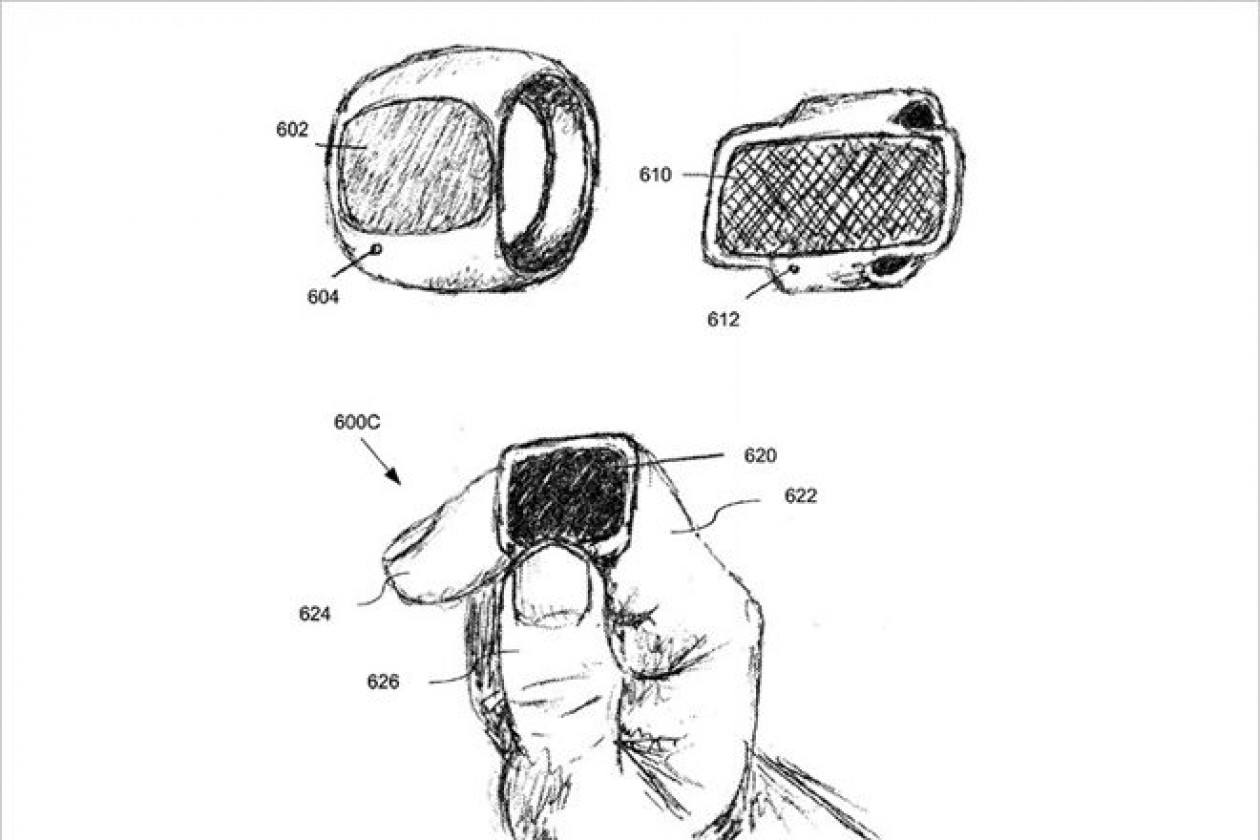A patent application, titled“Devices and Methods for a Ring Computing Device” published by the US Patent and Trademark Office,states that among many uses the product will be “a biometric sensor for sensing biometric information of the user”. It also says the device is necessary when “the light emitted by a touchscreen may be inappropriate in certain […]
A patent application, titled“Devices and Methods for a Ring Computing Device” published by the US Patent and Trademark Office,states that among many uses the product will be “a biometric sensor for sensing biometric information of the user”.
It also says the device is necessary when “the light emitted by a touchscreen may be inappropriate in certain social environments or even dangerous if it gives away the position of a threatened user”. What the hell does that mean? Apparently “a need therefore exists for a more discreet, safer, more efficient, or more ergonomic way to interact with touch pads or touch screens.”
The other potential uses of the iRing include the ability to talk to your index finger to write a text message, an email or a note. The ring could also vibrate for notifications and other alerts. So the iRing could be used to collect health data on the user and relay it automatically to nearby receivers – your new cloud based patient management system perhaps – as well as as a controller for smart home gadgets like lights, garage doors, and blinds.
The patent argues “there is a need for electronic devices with faster, more efficient methods and interfaces for interacting and/or controlling external electronic devices. Such methods and interfaces reduce the cognitive burden on a user and produce a more efficient human-machine interface.” A patent does not guarantee the product will launch in the market. Apple is known for filing patents to beat its competitors to the punch.


